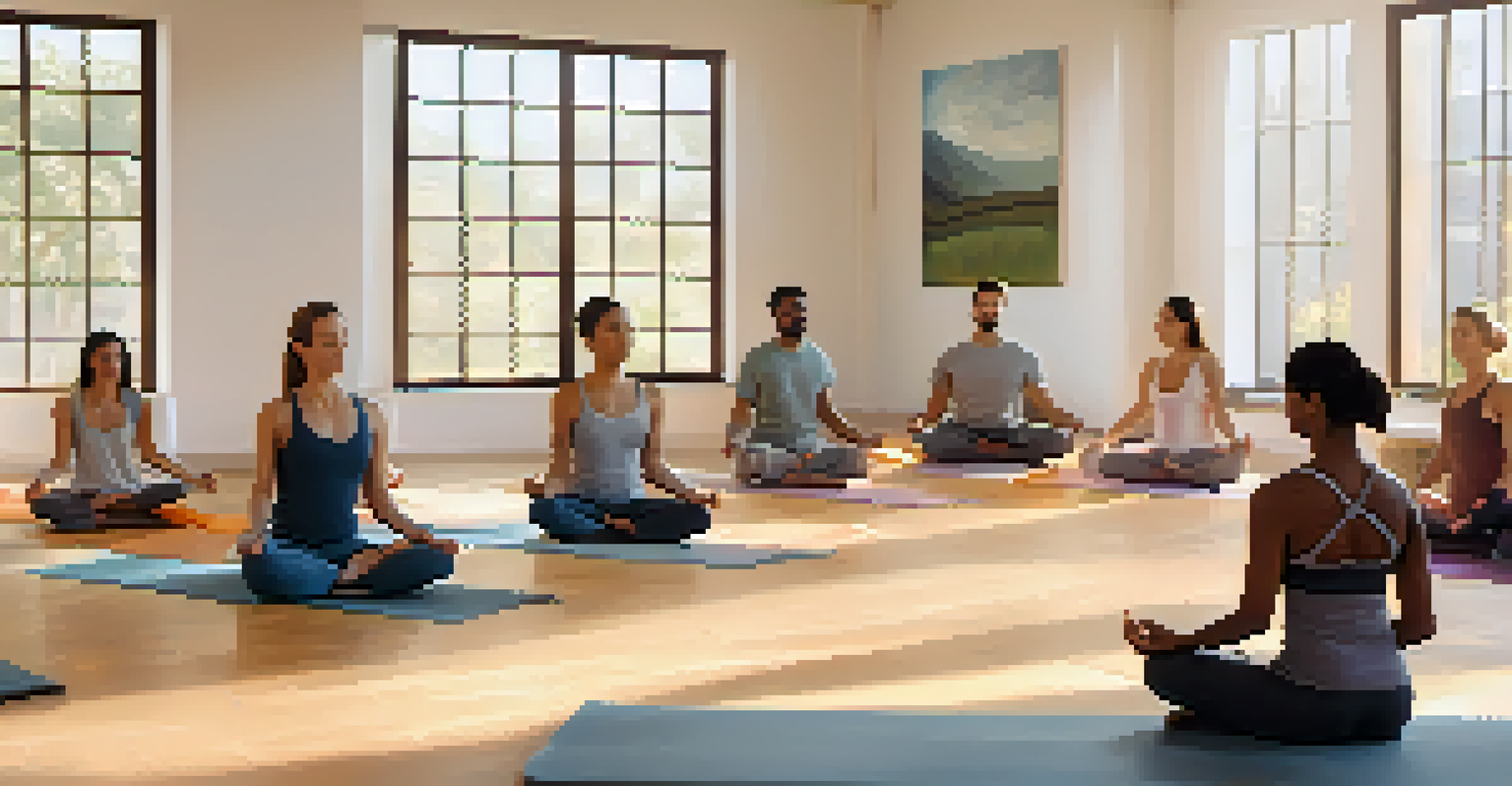Creating a Safe Space for Dialogue in Yoga Settings

Understanding the Importance of a Safe Space
Creating a safe space in yoga settings is essential for fostering open dialogue. It allows participants to express their thoughts and feelings without fear of judgment. This environment nurtures trust, which is crucial for personal growth and community building.
The greatest gift you can give another is the purity of your attention.
When students feel safe, they are more likely to engage in discussions about their experiences, challenges, and insights. This openness can lead to deeper connections among participants, enhancing the overall yoga experience. After all, yoga is not just about physical postures; it's about connecting with oneself and others.
By promoting a safe space, yoga instructors can encourage vulnerability, which is often necessary for healing and transformation. This dialogue can be particularly beneficial in addressing mental health issues, as it helps individuals to feel understood and supported.
Setting Ground Rules for Communication
Setting clear ground rules is a vital step in establishing a safe space. These rules can include guidelines on confidentiality, respect for differing opinions, and active listening. By establishing these expectations, participants know what behaviors are acceptable, creating a foundation for open dialogue.

For instance, instructors might encourage participants to share their thoughts only when they feel comfortable. This approach not only promotes respect but also allows individuals to choose their level of engagement. When everyone understands the boundaries, it fosters an atmosphere of safety.
Creating a Safe Space Matters
Establishing a safe environment in yoga settings fosters open dialogue and trust, essential for personal growth and community connection.
Additionally, reminding participants of these ground rules regularly can reinforce their importance. It serves as a gentle nudge to keep the environment respectful and inclusive, thus empowering everyone to speak freely.
Encouraging Active Listening Among Participants
Active listening is a crucial skill that can transform dialogue in yoga settings. It involves fully concentrating on what someone is saying rather than just waiting for your turn to speak. By practicing active listening, participants show respect and validation towards each other's experiences.
We are all just walking each other home.
Instructors can model this behavior by demonstrating how to listen attentively, nodding, and providing affirmations. This not only sets the tone but also encourages others to follow suit. When everyone feels heard, it opens the door for more meaningful conversations.
Creating opportunities for small group discussions can also enhance active listening. In smaller settings, participants may feel less intimidated and more inclined to share their thoughts, knowing they are in a supportive environment.
Addressing Sensitive Topics with Care
Sensitive topics can arise in yoga settings, especially during discussions about personal experiences or mental health. It's crucial to approach these subjects with care and empathy. Instructors should be prepared to guide conversations gently, ensuring that everyone feels safe and supported.
One effective method is to introduce sensitive topics gradually, allowing participants to engage at their own pace. For example, starting with a general discussion about stress before diving into personal experiences can create a comfortable transition. This way, participants can feel more at ease sharing their thoughts.
Active Listening Enhances Engagement
Encouraging active listening among participants promotes respect and validation, leading to more meaningful conversations.
Moreover, providing resources for further support can be beneficial. Whether it’s suggesting books, workshops, or counseling services, this demonstrates a commitment to participants' well-being beyond the yoga class.
Creating Opportunities for Group Sharing
Group sharing is a powerful tool for building community and connection in yoga settings. It allows participants to share their experiences and insights, fostering a sense of belonging. Instructors can facilitate this process by incorporating sharing circles or guided discussions into their classes.
These opportunities for dialogue not only enhance the group dynamic but also help individuals realize they are not alone in their struggles. For instance, sharing personal experiences can encourage others to open up, creating a ripple effect of vulnerability and support.
To make sharing feel safe, instructors can start by sharing their own experiences, setting a tone of openness. This encourages participants to engage more freely, knowing that their instructor also values authenticity and connection.
Integrating Mindfulness into Discussions
Mindfulness can significantly enhance the quality of dialogue in yoga classes. By encouraging participants to be present and aware during discussions, instructors can help them connect more deeply with their thoughts and feelings. This practice promotes a sense of calm and clarity, making conversations more meaningful.
Incorporating short mindfulness exercises, such as deep breathing or guided meditation, before discussions can prepare participants mentally. This creates a shared experience that helps everyone focus and engage fully in the conversation. When individuals approach dialogue from a mindful place, they are more likely to listen and respond thoughtfully.
Follow-Up Encourages Ongoing Dialogue
Providing follow-up opportunities helps maintain connections and fosters a sense of community beyond the yoga class.
Moreover, reminding participants to check in with their emotions during discussions can foster a deeper understanding of themselves and others. This practice encourages self-awareness and empathy, which are vital for effective communication.
Following Up and Encouraging Continued Dialogue
Creating a safe space for dialogue doesn't end when the class is over. Instructors can encourage continued conversation by providing follow-up opportunities, such as dedicated discussion forums or social media groups. This allows participants to maintain connections and share their experiences beyond the yoga mat.
Regular check-ins can also be beneficial. Instructors can send out newsletters or host informal gatherings to keep the lines of communication open. These follow-ups show participants that their voices matter and that the community values their input.

Lastly, encouraging feedback on the dialogue process can help instructors refine their approach. Participants may have suggestions or insights that can enhance future discussions, fostering a sense of ownership and investment in the community.